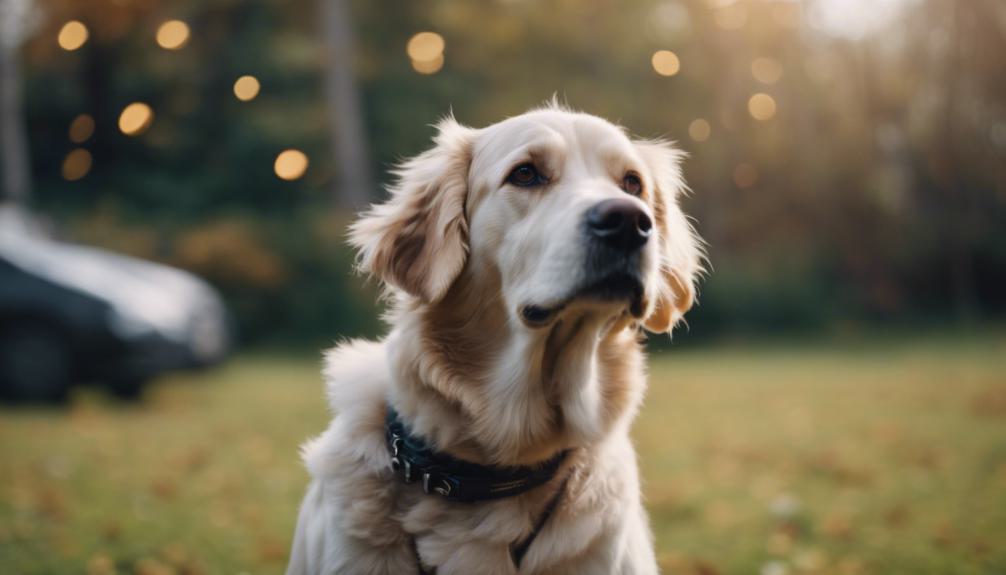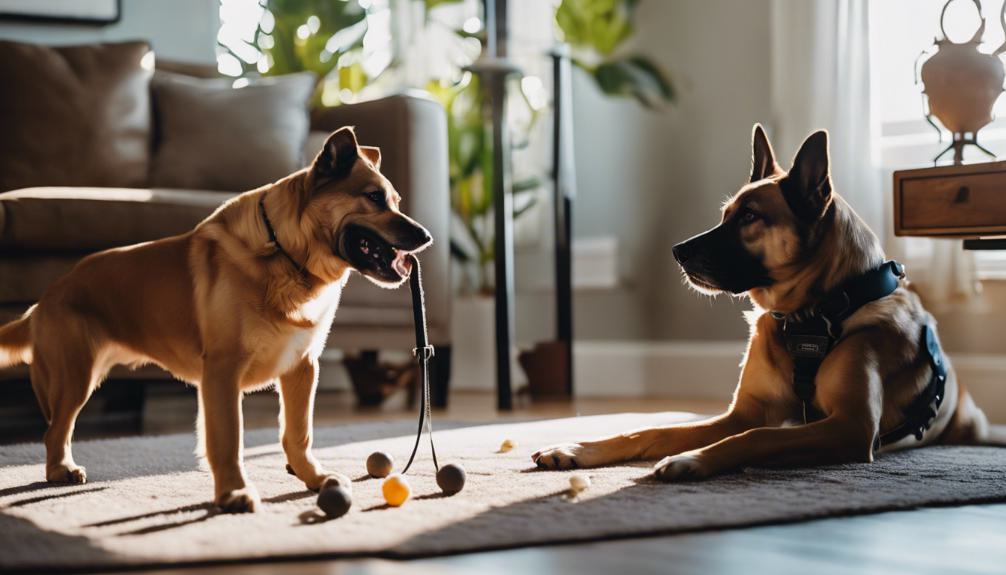How to Train a Dog Out of Possession Aggression? Smart Solutions
Train your dog out of possession aggression by using early prevention strategies and positive reinforcement techniques. Start training early, create positive experiences with items, and address growling behavior promptly. Use commands like ‘Leave it‘ and ‘Drop it‘, and be consistent with training. Manage the environment by controlling access to valued items and seek professional guidance if needed. Stay patient and consistent in your efforts to see progress. Consistency and patience are key to changing behavior effectively. More strategies and tips are available to further help you with training your dog out of possession aggression.
Early Prevention Strategies for Possession Aggression
Begin training your dog early to ward off possessive aggression by creating positive experiences when they handle items.
If your dog growls over their food bowl or toys, it’s a sign of possessive behavior that needs immediate attention.
You can teach your dog that letting go of items leads to rewards through methods like desensitization and counter-conditioning.
Gradually get your dog used to having their items taken and then returned.
This approach helps prevent the development of possessive aggression.
Positive Reinforcement Techniques for Training
To address possessive aggression in dogs, use positive reinforcement techniques, rewarding behaviors you want to see. This type of aggression typically shows when a dog guards food, bowls, or valuable items. Train your puppy by giving treats or toys right after they show calm, non-guarding behaviors. Regular rewards will gradually change your dog’s behavior.
| Positive Reinforcement Techniques |
|---|
| Reward good behavior with treats, praise, or toys |
| Give rewards right after the right behavior |
| Keep training sessions brief, regular, and fun |
| Consistently use positive reinforcement to lessen possessive actions |
Implementing Effective Commands and Cues

To manage possessive aggression in dogs effectively, use commands like ‘Leave it‘ to divert their focus from items they guard. Teach the ‘Drop it‘ command to discourage possessive behaviors and promote voluntary item release. Employ the ‘Trade ya‘ cue, offering high-value treats in exchange for the guarded objects, which can positively address possessive aggression. Remember, maintaining consistency is crucial for success in controlling this behavior.
In employing these techniques, ensure each command is clear and repeated regularly. For example, when teaching ‘Leave it,’ consistently use the same phrase and reward the dog immediately after they obey. This helps reinforce the desired behavior. Similarly, with ‘Drop it,’ practice with various objects to ensure the dog understands the command in different contexts.
Use the ‘Trade ya’ technique by introducing items that the dog values more than the guarded object. This could be a favorite toy or a special treat. The idea is to make the trade appealing to your dog, encouraging them to give up the guarded item willingly.
Consistency in training and commands fosters trust and understanding between you and your dog. It reduces confusion and builds a reliable response to your cues, essential in managing possessive aggression effectively.
Managing the Environment to Reduce Aggression
To effectively manage possessive aggression in dogs, manipulating their environment is key. Here are some practical steps:
Control the dog’s access to valued items by using doors and baby gates. This helps separate the dog in another room when needed. According to animal behaviorists, physical barriers can prevent escalation and reinforce safe boundaries, promoting a calmer environment.
Limit access to toys and treats that your dog is especially possessive of. By keeping these high-value items out of reach, you can prevent aggressive reactions. Studies suggest that removing triggers is a fundamental step in behavior modification.
Prevent aggressive behavior by ensuring high-value items aren’t accessible to possessive dogs. This strategy helps in avoiding situations that could lead to growling or snapping.
Manage your dog’s guarding tendencies by restricting access to guarded items. Behavioral experts often recommend this as a crucial measure to reshape possessive behaviors.
Seeking Professional Guidance and Resources

Seek professional help and use valuable resources to manage your dog’s possessive aggression effectively. If your dog shows severe possessive aggression, consult a veterinary behaviorist. These experts address the root causes of aggressive behaviors.
For ongoing support, enroll in training classes led by certified trainers. These professionals provide structured advice on how to correct possessive actions.
Work with animal behavior experts to create a tailor-made training plan for your dog. This plan will focus specifically on curbing possessive aggression.
Consistency and Patience in Training Efforts
To effectively manage possessive aggression in your dog, it’s crucial to be consistent and patient in your training efforts. Applying training methods consistently builds a solid foundation for changing behavior in the long run. Repeating and reinforcing good behaviors is key to successful training. This strategy helps your dog learn what you expect and understand limits, which can reduce possessive aggression.
Maintain a routine in your training sessions. This consistency helps your dog feel secure and understand what’s expected. Use clear commands and reward good behavior immediately to reinforce these lessons. Avoid changing your approach frequently, as this can confuse your pet and set back progress.
Training should be a daily activity. Even short sessions, say 10 to 15 minutes long, can be very effective. Focus on one or two behaviors per session to avoid overwhelming your dog and dilute the learning process.
Remember, managing aggression takes time. Don’t expect immediate changes. It can take weeks or even months of consistent effort to see significant improvements. Patience is your ally here.
Also, consider professional help if the aggression doesn’t improve. A trained behaviorist can provide insights and techniques that are specific to your dog’s needs.
Frequently Asked Questions
Can You Fix Possessive Aggression in Dogs?
You can fix possessive aggression in dogs by consistently training and using behavior modification techniques. Positive reinforcement and professional help may be needed for severe cases. Commands like ‘Leave it’ and ‘Drop it’ are effective tools.
How Do You Fix Owner Aggression in Dogs?
To fix owner aggression in dogs, use positive reinforcement training methods. Reward good behavior and teach commands like ‘drop it’ and ‘leave it.’ Implement a ‘nothing in life is free’ approach, and seek help from a professional if needed.
How Do I Stop My Dog From Being Toy Possession?
To stop your dog from being toy possessive, teach a strong ‘drop it’ command. Use positive reinforcement and gradual desensitization. Avoid punishment. Seek guidance from a professional for tailored strategies. Remember, patience and consistency are key in addressing possessiveness.
Can Dog Aggression Be Trained Out?
You can train dog aggression out with the right approach. Consistent training, positive reinforcement, and commands like ‘drop it’ are effective. Professional help may be needed for severe cases. Patience and consistency are essential for success.
Conclusion
To effectively train a dog out of possession aggression, start with early prevention techniques. Use positive reinforcement to reward good behavior. Teach clear commands and maintain a controlled environment. It’s important to consult with a professional trainer for guidance.
Stay consistent and patient throughout the training process. With commitment and the right methods, you can help your dog manage its aggression. This leads to a more peaceful and trusting relationship. Keep working hard, and you’ll notice improvements soon.

